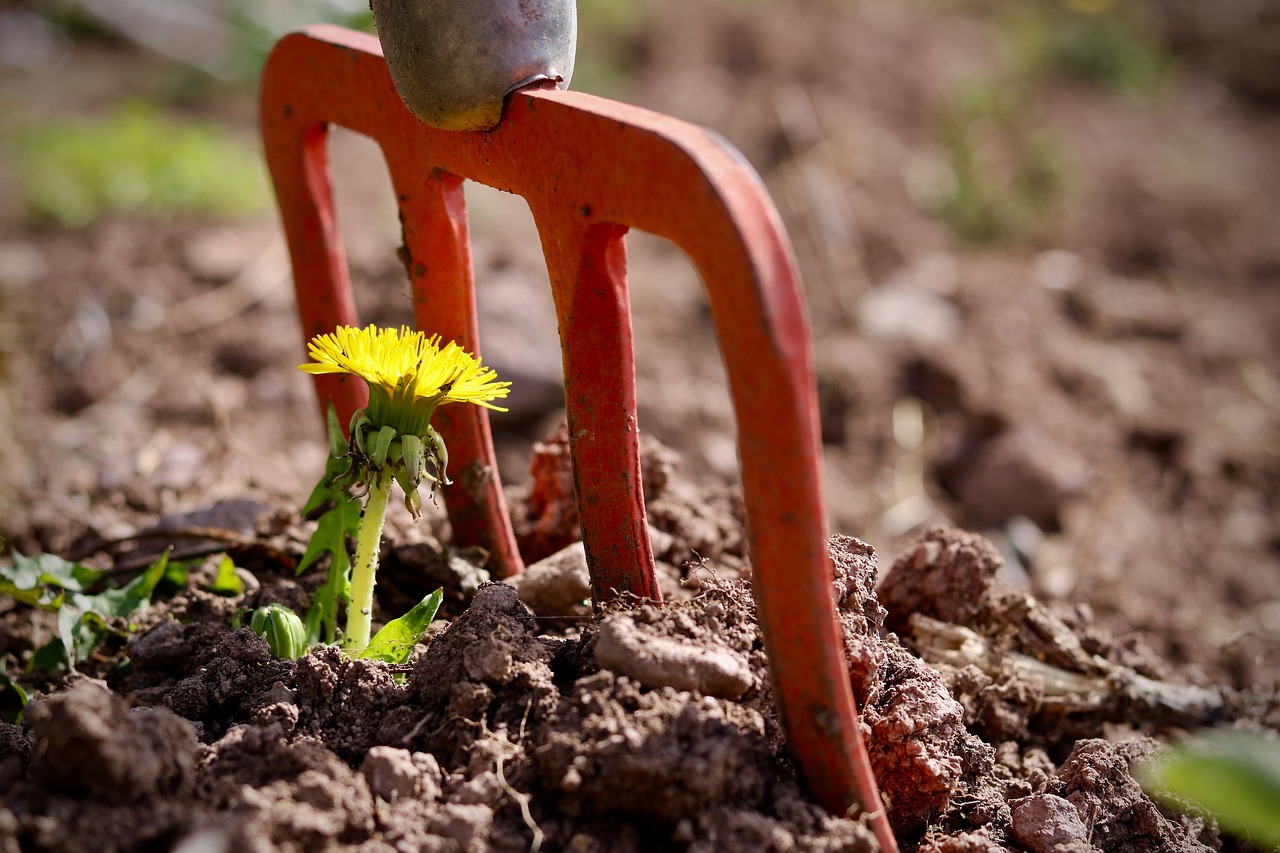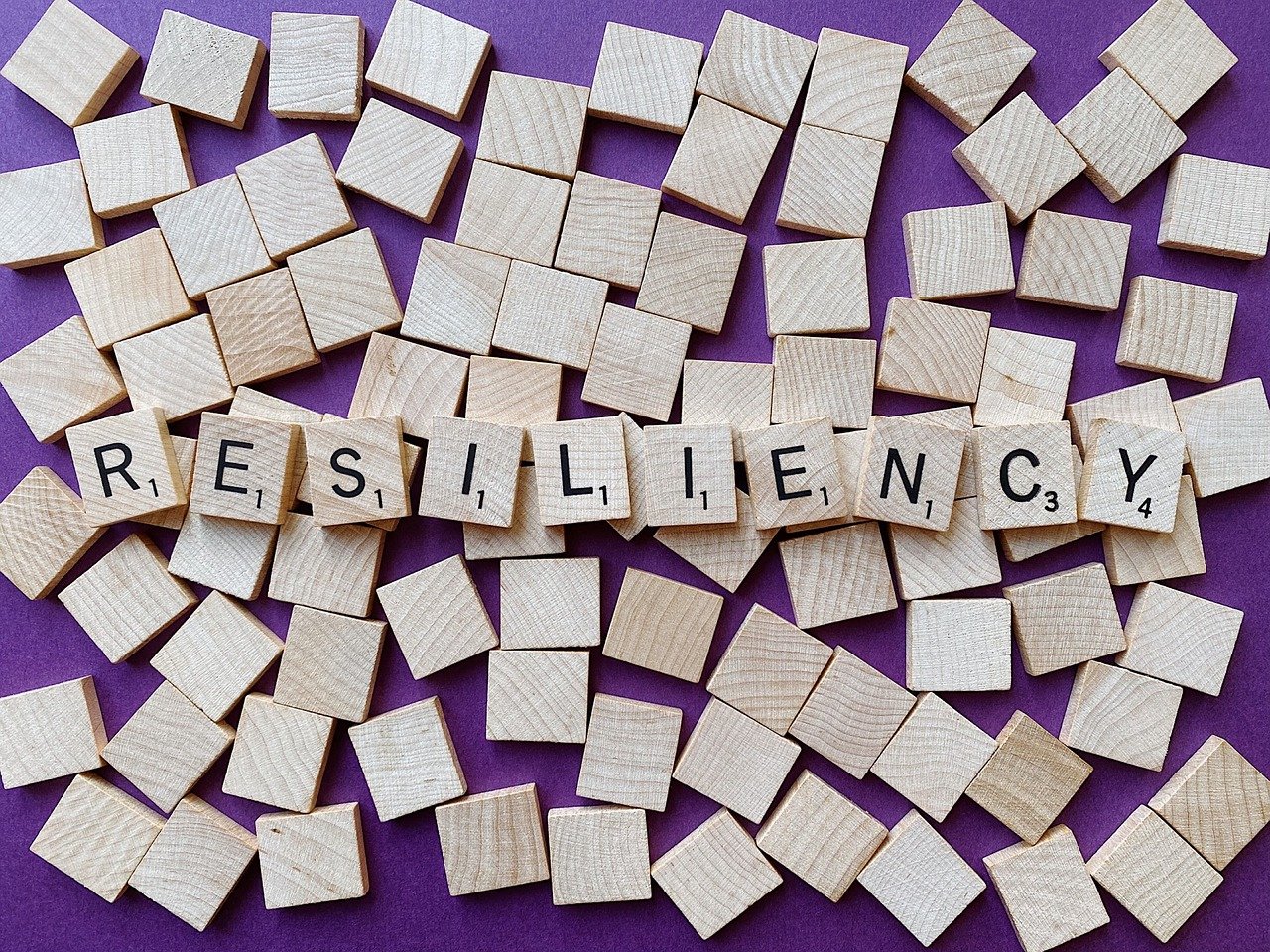Aiming for Resilience - A Toolkit for Teenagers
In today's fast-paced world, teenagers face a multitude of challenges that can often feel overwhelming. From academic pressures to social dynamics, the ability to bounce back from setbacks—known as resilience—becomes an essential skill. This article provides essential strategies and insights to help teenagers develop resilience, enabling them to navigate challenges effectively and thrive in their personal and academic lives. Resilience is not just about enduring hardships; it's about growing through them and emerging stronger. Imagine a rubber band; it stretches and bends but always returns to its original shape. Similarly, resilient teenagers learn to adapt, recover, and even flourish in the face of adversity.
So, what exactly is resilience? It's the ability to recover from difficulties and adapt well in the face of adversity. Think of it as your emotional toolkit that helps you handle life's inevitable bumps in the road. Resilience is crucial because it not only helps teenagers cope with stress but also fosters a sense of empowerment. When teens learn to manage challenges effectively, they build confidence and a positive self-image. But how can resilience be cultivated? It starts with understanding that setbacks are not failures; they're opportunities to learn and grow. Just as a plant needs water and sunlight to thrive, teenagers need the right mindset and support to develop resilience.
One of the most significant factors in building resilience is having a growth mindset. This concept, popularized by psychologist Carol Dweck, emphasizes the belief that abilities and intelligence can be developed through dedication and hard work. When teenagers adopt a growth mindset, they view challenges as opportunities to improve rather than insurmountable obstacles. This shift in perspective empowers them to face difficulties head-on and learn valuable lessons from their experiences. It's like viewing a mountain not as a barrier but as a thrilling adventure waiting to be conquered.
A positive attitude can significantly impact resilience. It's not just about wearing a smile; it's about fostering an optimistic outlook that influences how teenagers approach life. Techniques for cultivating this positivity include practicing mindfulness, engaging in uplifting activities, and surrounding oneself with supportive friends. When teens focus on the good in their lives, they build a mental buffer against stress. This can be as simple as keeping a journal where they jot down things they are grateful for each day. Remember, a little positivity can go a long way!
Gratitude practices can enhance well-being and emotional resilience. Teenagers can incorporate gratitude into their daily lives by taking a moment each day to reflect on what they appreciate. This could be as simple as acknowledging a friend's support or enjoying a beautiful sunset. Research shows that regularly expressing gratitude can lead to improved mental health, reduced stress, and increased overall happiness. It's like planting seeds of positivity that bloom into a garden of resilience.
Positive affirmations can reshape self-perception and build confidence. The way teenagers talk to themselves matters! Encouraging self-talk can transform negative beliefs into empowering ones. For instance, instead of saying, "I can't do this," they can affirm, "I am capable of overcoming challenges." This simple shift can significantly affect their resilience. By consistently practicing affirmations, teenagers can reinforce their self-worth and create a more positive internal dialogue.
Supportive relationships are vital for resilience. Friends, family, and mentors play a crucial role in helping teenagers navigate life's ups and downs. Having someone to lean on during tough times can make all the difference. It's essential for teens to nurture these connections, as strong social support can buffer against stress and enhance emotional well-being. Just like a sturdy bridge, supportive relationships provide stability and strength when navigating turbulent waters.
Effective coping strategies are essential for managing stress. Teenagers often encounter various challenges, and having a toolkit of coping mechanisms can empower them to handle these situations with grace. Techniques such as deep breathing, physical exercise, and creative outlets like art or music can help manage stress and promote emotional well-being. It's important for teens to experiment with different strategies to find what works best for them, much like trying on different outfits until they find the perfect fit.
Mindfulness practices can enhance resilience. By focusing on the present moment, teenagers can reduce anxiety and stress. Techniques such as meditation, yoga, or simply taking deep breaths can help them stay grounded during tough times. These practices allow teens to cultivate a sense of calm and clarity, enabling them to respond to challenges with a level head.
Strong problem-solving skills contribute to resilience. When teenagers encounter obstacles, having the ability to think critically and creatively can make a significant difference. Encouraging them to break down problems into manageable parts and brainstorm potential solutions fosters independence and confidence. It's like being a detective, piecing together clues to solve a mystery. The more they practice, the better equipped they'll be to tackle future challenges.
Goal-setting is a key component of resilience. By setting realistic, achievable goals, teenagers can create a roadmap for their success. Taking actionable steps toward these goals not only fosters a sense of accomplishment but also builds confidence. It's essential for teens to celebrate their progress, no matter how small, as this reinforces their capability to overcome challenges.
A personal action plan can guide resilience-building efforts. Teenagers can outline their goals, identify the steps needed to achieve them, and track their progress. This structured approach helps them stay focused and motivated, much like a treasure map leading them to success. Regularly revisiting and adjusting their action plan ensures they remain aligned with their aspirations and can adapt to changing circumstances.
Regular evaluation is crucial for growth. Teenagers should assess their progress periodically and make necessary adjustments to their goals. This reflective practice allows them to recognize their achievements and identify areas for improvement. It's similar to tuning a musical instrument; regular checks ensure they stay in harmony with their aspirations.
- What is resilience? Resilience is the ability to bounce back from challenges and adapt positively to adversity.
- How can teenagers develop resilience? By cultivating a growth mindset, practicing gratitude, building strong relationships, and developing effective coping strategies.
- Why is a positive attitude important for resilience? A positive attitude helps teenagers view challenges as opportunities, fostering confidence and emotional strength.
- What are some effective coping strategies? Techniques such as mindfulness, relaxation exercises, and problem-solving skills can help manage stress effectively.

Understanding Resilience
Resilience is like a rubber band; it stretches and bends, but it always returns to its original shape. In the context of teenagers, resilience is the ability to bounce back from challenges, setbacks, and disappointments. It’s not just about enduring tough times; it’s about thriving despite them. This quality is essential for personal growth and academic success, as it enables young individuals to navigate the rollercoaster of adolescence with greater ease.
So, why is resilience important? Well, think of life as a game filled with obstacles and hurdles. Those who possess resilience are better equipped to tackle these challenges head-on. They don’t just survive; they learn and grow from their experiences. This ability to adapt and recover is crucial during teenage years, a period often fraught with emotional ups and downs, peer pressure, and academic stress. When teenagers cultivate resilience, they develop coping mechanisms that allow them to handle life's inevitable curveballs.
Moreover, resilience is not an inherent trait that some people are born with while others are not. Instead, it is a skill that can be nurtured and developed over time. By understanding the factors that contribute to resilience, teenagers can actively work on enhancing this vital quality. Here are some key elements that play a role in building resilience:
- Self-awareness: Recognizing one’s emotions and thoughts is the first step toward resilience.
- Social support: Having a network of friends and family can provide the encouragement needed during tough times.
- Problem-solving skills: The ability to tackle challenges head-on and find solutions is crucial.
- Optimism: A positive outlook can transform challenges into opportunities for growth.
In summary, understanding resilience involves recognizing its definition, importance, and the ways it can be cultivated. By fostering resilience, teenagers can not only navigate their current challenges but also prepare themselves for the future. They will learn that setbacks are not the end of the road but rather stepping stones toward greater achievements. As they embrace resilience, they will find themselves better equipped to face the world with confidence and determination.

The Role of Mindset
When it comes to resilience, the mindset we adopt plays a pivotal role in shaping how we respond to life's challenges. A growth mindset, which is the belief that our abilities and intelligence can be developed through dedication and hard work, is essential for teenagers navigating the turbulent waters of adolescence. Imagine your mind as a garden; if you plant seeds of positivity and growth, you’ll cultivate a flourishing landscape, but if you let weeds of negativity take over, the beauty will fade. This section delves into how fostering a growth mindset can empower teenagers to face obstacles head-on and turn failures into valuable learning experiences.
One of the first steps in cultivating a growth mindset is to recognize that challenges are not roadblocks but rather opportunities for growth. When teenagers encounter difficulties—be it in academics, sports, or social situations—they can choose to see them as chances to learn rather than insurmountable barriers. This shift in perspective can be transformational. For instance, when faced with a poor grade on a test, instead of feeling defeated, a teenager with a growth mindset might think, "What can I learn from this experience?" This simple question can lead to a proactive approach to improvement.
Moreover, embracing a positive perspective is not just about thinking happy thoughts; it's about developing resilience through active engagement with challenges. Here are a few strategies teenagers can employ to cultivate a growth mindset:
- Embrace challenges: Instead of avoiding difficult tasks, lean into them. Each challenge faced is a stepping stone towards greater resilience.
- Learn from criticism: Feedback, even when it feels harsh, can be a valuable tool for improvement. Encourage teenagers to view constructive criticism as a guide rather than a setback.
- Celebrate effort, not just results: Focusing on the effort put into tasks, regardless of the outcome, reinforces the idea that hard work leads to growth.
Another critical aspect of fostering resilience through mindset is the concept of self-efficacy—the belief in one's ability to succeed. When teenagers believe they can achieve their goals, they are more likely to put forth the effort needed to reach them. This belief can be nurtured through positive affirmations and self-talk. For instance, when preparing for a challenging exam, instead of thinking, "I'll never pass this," a teenager might say, "I have studied hard, and I can do this!" Such affirmations help build a strong foundation of confidence and resilience.
Ultimately, the role of mindset in resilience cannot be overstated. It serves as the lens through which teenagers view their experiences and challenges. By adopting a growth mindset, they can navigate the ups and downs of life with greater ease and confidence. They learn that failures are not the end but rather the beginning of a new journey towards success. As they cultivate this mindset, they become equipped with the tools necessary to thrive, not just survive, in their personal and academic lives.

Cultivating a Positive Attitude
When it comes to resilience, is like planting seeds in a garden. Just as a garden needs sunlight, water, and care to flourish, our minds require positivity, encouragement, and nurturing thoughts to thrive amidst challenges. A positive attitude doesn't mean ignoring the difficulties; rather, it’s about facing them with a hopeful outlook and believing that we can overcome them. So, how can teenagers foster this vital mindset in their daily lives?
One effective way to cultivate a positive attitude is through visualization. Imagine yourself achieving your goals or overcoming obstacles. This mental imagery can be incredibly powerful. Picture yourself walking across the stage at graduation, or nailing that big presentation in class. By visualizing success, you’re not just dreaming; you’re training your brain to believe that these achievements are possible. The more vividly you imagine these scenarios, the more likely you are to manifest them into reality.
Another technique to boost positivity is to surround yourself with uplifting influences. This could mean spending time with friends who inspire you, engaging in activities that make you happy, or even consuming media that promotes a positive outlook. Remember, negativity can be contagious, so it’s essential to create an environment that uplifts your spirit. You might consider keeping a “positivity journal” where you jot down moments of joy or things you are grateful for each day. This simple practice can shift your focus from what’s wrong to what’s right in your life.
Additionally, practicing mindfulness is a fantastic way to foster a positive attitude. Mindfulness encourages you to stay present and appreciate the moment rather than getting lost in worries about the future or regrets about the past. Techniques such as deep breathing, meditation, or simply taking a moment to observe your surroundings can help ground you and cultivate a sense of peace. When you’re calm and centered, it’s much easier to maintain a positive outlook.
Incorporating positive self-talk into your daily routine can also make a significant difference. The way you speak to yourself matters! Instead of saying, “I can’t do this,” try reframing it to, “I will do my best, and that’s enough.” This shift in language can transform your mindset and empower you to tackle challenges head-on. Remember, you are your own biggest cheerleader, so make sure the voice in your head is supportive and encouraging!
Lastly, don’t underestimate the power of laughter. Laughter is a natural mood booster and can instantly lighten your spirits. Whether it’s watching a funny movie, sharing jokes with friends, or indulging in a humorous book, laughter can help shift your perspective and remind you that life is not just about struggles but also about joy and connection. So go ahead and share a laugh; it’s good for your soul!
In conclusion, cultivating a positive attitude is an ongoing journey, not a destination. By incorporating visualization, surrounding yourself with positivity, practicing mindfulness, engaging in positive self-talk, and embracing laughter, teenagers can build a resilient mindset that can weather any storm. Remember, just like a garden, the more you nurture your positive outlook, the more it will flourish!
- What is resilience, and why is it important for teenagers? Resilience is the ability to bounce back from difficulties. It’s crucial for teenagers as it helps them navigate the challenges of adolescence, including academic pressures and social dynamics.
- How can I practice gratitude daily? You can practice gratitude by keeping a journal where you write down three things you’re thankful for each day or by sharing your gratitude with friends and family.
- What are some effective relaxation techniques? Mindfulness meditation, deep breathing exercises, and yoga are all effective techniques to help manage stress and enhance resilience.
- How do I set realistic goals? Start by identifying what you want to achieve, break it down into smaller, manageable steps, and set a timeline for each step to keep yourself accountable.

Practicing Gratitude
Gratitude is more than just saying "thank you"; it’s a powerful practice that can transform a teenager's outlook on life. When teenagers take the time to appreciate what they have, they can cultivate a sense of positivity that acts like a shield against life's challenges. Think about it: when you focus on the good, it’s like putting on a pair of rose-tinted glasses that help you see the world in a brighter light. This shift in perspective can significantly enhance emotional resilience, making it easier to bounce back from setbacks.
So, how can teenagers incorporate gratitude into their daily lives? It doesn’t have to be complicated. Here are a few simple yet effective methods:
- Gratitude Journaling: Encourage teenagers to keep a gratitude journal. Each day, they can write down three things they are thankful for. This simple act can shift their focus from what’s going wrong to what’s going right.
- Thank You Notes: Writing thank you notes to friends, family, or teachers can reinforce positive feelings. It’s a wonderful way to express appreciation and strengthen relationships.
- Mindful Moments: Taking a few minutes each day to reflect on positive experiences can be incredibly grounding. Whether it’s savoring a delicious meal or enjoying a sunny day, mindfulness can deepen their sense of gratitude.
Another effective way to practice gratitude is through **expressive conversations**. Encourage teenagers to share their appreciation openly with others. This can be as simple as telling a friend how much they value their support or acknowledging the hard work of a teacher. These interactions not only enhance their relationships but also reinforce their own feelings of gratitude.
Incorporating gratitude practices into daily routines can lead to significant improvements in overall well-being. Research shows that regularly practicing gratitude can increase happiness and reduce feelings of depression and anxiety. It’s like building a muscle; the more you practice, the stronger it gets. By embracing gratitude, teenagers can create a positive feedback loop that enhances their resilience, allowing them to face life’s challenges with a more hopeful and empowered mindset.
In conclusion, practicing gratitude is a simple yet profound way for teenagers to enhance their emotional resilience. By making gratitude a part of their daily lives, they can cultivate a more positive attitude, strengthen their relationships, and ultimately thrive in both their personal and academic endeavors.

Affirmations and Self-Talk
When it comes to building resilience, affirmations and self-talk play a crucial role. Imagine your mind as a garden; the thoughts you cultivate are the seeds that determine what will grow. If you plant weeds of doubt and negativity, you’ll harvest a crop of insecurity. But, if you choose to sow seeds of positivity and strength, you’ll reap a flourishing garden of confidence and resilience. Affirmations are positive statements that can help challenge and overcome self-sabotaging thoughts. By repeating affirmations regularly, teenagers can reinforce a positive self-image and foster a mindset that embraces challenges rather than shying away from them.
Consider this: every time a teenager faces a setback, their inner dialogue can either lift them up or drag them down. Positive self-talk acts as a mental coach, guiding them through tough times. Instead of saying, “I can’t do this,” they can shift their mindset to, “I am capable of overcoming challenges.” This simple change can make a world of difference. It’s like switching from a rainy day to a sunny one; the outlook becomes brighter and more hopeful.
To effectively use affirmations, teenagers can start by identifying areas where they feel insecure or challenged. They can then create personalized affirmations that resonate with their experiences. For example, if a teenager struggles with public speaking, they might use affirmations like:
- I am a confident speaker.
- My voice is strong and clear.
- I embrace opportunities to share my ideas.
These affirmations can be written down and placed where they’ll be seen daily—like on a mirror or the fridge. The key is consistency; the more they repeat these affirmations, the more they will believe in them. Over time, this practice can reshape their self-perception and strengthen their resilience.
Moreover, self-talk is not just about what we say to ourselves but also how we say it. The tone and intention behind the words matter. Encouraging self-talk should be compassionate and supportive, almost like having a best friend in your corner cheering you on. When teenagers practice this kind of self-talk, they can build a mental environment that nurtures growth and resilience, allowing them to face life's ups and downs with confidence.
In summary, affirmations and self-talk are powerful tools for teenagers aiming to enhance their resilience. By consciously choosing positive words and nurturing a supportive inner dialogue, they can cultivate a mindset that not only embraces challenges but thrives in the face of adversity.
Q: How can I create effective affirmations?
A: Start by identifying your insecurities or challenges. Then, write simple, positive statements that counter those thoughts. Make sure they are personal and resonate with you.
Q: How often should I practice affirmations?
A: Consistency is key! Aim to practice your affirmations daily, preferably in the morning or before facing a challenging situation.
Q: Can self-talk really change my mindset?
A: Absolutely! Positive self-talk can reshape your perceptions and reactions to challenges. It’s like training your brain to be your biggest supporter.
Q: What if I struggle to believe my affirmations?
A: It’s normal to feel skeptical at first. Start with affirmations that feel slightly believable and gradually work your way up to more ambitious statements.

Building Strong Relationships
When it comes to resilience, one of the most powerful tools teenagers can have in their arsenal is the ability to build and maintain strong relationships. Think of these connections as your personal safety net; they catch you when you stumble and help you bounce back. The friendships and support systems we cultivate during our teenage years can significantly influence how we handle life's ups and downs. So, how can teenagers foster these vital relationships?
First and foremost, it's essential to nurture existing friendships. Just like a garden, relationships require attention and care. Regular check-ins, whether through texts, calls, or face-to-face hangouts, can strengthen bonds. It’s not just about spending time together; it’s about making an effort to understand each other’s feelings and experiences. When friends know they can rely on each other, it creates a solid foundation of trust, which is crucial for resilience.
Moreover, seeking out new friendships can also be beneficial. Joining clubs, sports teams, or community groups can help teenagers meet new people who share similar interests. This not only expands their social circle but also introduces them to diverse perspectives, enriching their understanding of the world. Variety is the spice of life, after all! By surrounding themselves with a mix of personalities, teenagers can learn valuable lessons in empathy and adaptability, both of which are essential for resilient living.
It's also important to foster open communication within these relationships. Encouraging honest conversations about feelings, fears, and aspirations can create a safe space for vulnerability. When teenagers feel comfortable expressing themselves, they are more likely to seek support during tough times. Remember, it’s not just about sharing the good times; it’s about being there for one another during the challenging moments too.
In addition, developing conflict resolution skills can significantly impact the strength of relationships. Disagreements are natural, but how they are handled can either fortify or weaken a bond. Teaching teenagers to approach conflicts with a mindset of understanding rather than defensiveness can lead to healthier interactions. This means listening actively, validating feelings, and finding common ground. When conflicts are resolved constructively, it not only strengthens relationships but also boosts resilience, as teenagers learn to navigate challenges together.
Lastly, don't underestimate the power of seeking support from trusted adults, whether they be parents, teachers, or mentors. These individuals can provide guidance and wisdom that enrich a teenager's social experience. They can offer perspectives on building healthy relationships and help teenagers understand the importance of surrounding themselves with positive influences. A strong support network can make all the difference when facing life's hurdles.
In summary, building strong relationships is a multifaceted process that involves nurturing existing bonds, seeking new connections, fostering open communication, developing conflict resolution skills, and engaging with trusted adults. By investing time and effort into these relationships, teenagers can create a robust support system that enhances their resilience and equips them to face life’s challenges with confidence.
- Why are strong relationships important for resilience?
Strong relationships provide emotional support, help in problem-solving, and create a sense of belonging, all of which contribute to a teenager's ability to cope with challenges. - How can teenagers improve their communication skills?
Practicing active listening, being open about feelings, and engaging in regular conversations with friends and family can enhance communication skills. - What should I do if I face conflict in a friendship?
Approach the conflict calmly, listen to the other person's perspective, and try to find a solution that works for both of you. It's important to communicate openly and honestly. - How can I find new friends?
Joining clubs, participating in sports, or attending community events are great ways to meet new people with similar interests.

Developing Coping Strategies
When life throws challenges your way, how do you respond? Developing effective coping strategies is like equipping yourself with a toolbox that helps you navigate through the stormy seas of adolescence. Coping strategies are essential for managing stress and overcoming obstacles, and they can make a significant difference in how teenagers experience life's ups and downs. Think of these strategies as your personal life hacks that empower you to tackle problems head-on, rather than letting them overwhelm you.
One of the first steps in developing coping strategies is to recognize the various stressors that can affect teenagers today. From academic pressures and social dynamics to family expectations and personal insecurities, the list can feel endless. However, the good news is that there are several techniques that can help you cope with these challenges effectively. By implementing these strategies, you can build resilience and foster a stronger sense of self.
For starters, mindfulness and relaxation techniques are incredibly beneficial. Mindfulness is all about being present and fully engaged in the moment, which can help reduce anxiety and improve emotional regulation. Techniques such as deep breathing, meditation, or even simple stretching exercises can ground you when life feels chaotic. For instance, taking just five minutes a day to focus on your breathing can create a significant shift in your mental state. Here’s a simple deep breathing exercise:
1. Find a quiet space and sit comfortably. 2. Inhale deeply through your nose for a count of four. 3. Hold your breath for a count of four. 4. Exhale slowly through your mouth for a count of four. 5. Repeat this process for a few minutes.
Another effective coping strategy is to enhance your problem-solving skills. When faced with a challenge, breaking it down into smaller, manageable parts can make it feel less daunting. For example, if you're struggling with a difficult assignment, instead of feeling overwhelmed, try to:
- Identify the specific areas you find challenging.
- Seek help from a teacher or classmate.
- Break the assignment into smaller tasks and tackle them one at a time.
This approach not only helps you to address the issue at hand but also builds your confidence in handling similar challenges in the future. Remember, every problem has a solution; it’s just about finding the right path to it.
Moreover, it’s crucial to recognize the importance of social support in your coping strategies. Having a strong support system can be a game-changer. Whether it’s friends, family, or mentors, talking through your feelings and experiences can provide relief and new perspectives. Don’t hesitate to reach out when you need a listening ear or advice. Building and maintaining these connections can be as vital as any coping strategy you implement.
Lastly, it’s important to remember that developing coping strategies is not a one-size-fits-all approach. What works for one person may not work for another, and that’s perfectly okay. Experiment with different techniques, and don’t be afraid to mix and match. The key is to find what resonates with you and helps you to feel more in control of your emotions and reactions.
Q: What are coping strategies?
A: Coping strategies are techniques or methods used to manage stress and navigate challenges effectively. They can include mindfulness practices, problem-solving skills, and seeking social support.
Q: How can I develop better coping strategies?
A: Start by identifying your stressors, practicing mindfulness, enhancing your problem-solving skills, and building a strong support network. Experiment with different techniques to find what works best for you.
Q: Can coping strategies help with academic stress?
A: Absolutely! Effective coping strategies can help you manage academic pressures by providing you with tools to handle stress, break down assignments, and seek help when needed.
Q: What if I feel overwhelmed by my emotions?
A: It’s okay to feel overwhelmed sometimes. Consider reaching out to a trusted friend, family member, or mental health professional for support. Practicing mindfulness and relaxation techniques can also help you regain a sense of calm.

Mindfulness and Relaxation Techniques
In today's fast-paced world, where distractions are everywhere and stress seems to be a constant companion, have emerged as essential tools for teenagers. These practices not only help in managing stress but also enhance overall well-being, allowing teenagers to stay grounded amidst the chaos of their daily lives. Imagine being able to pause, take a deep breath, and find your center even when everything around you feels overwhelming. That's the power of mindfulness!
Mindfulness is all about being present in the moment, fully engaging with your surroundings, and acknowledging your thoughts and feelings without judgment. This practice can be as simple as taking a few minutes each day to focus on your breath, observing the sensations in your body, or even paying attention to the sounds around you. By cultivating mindfulness, teenagers can develop a greater awareness of their emotions and reactions, which is crucial for building resilience.
Relaxation techniques, on the other hand, are strategies that help reduce stress and promote a sense of calm. Techniques like deep breathing, progressive muscle relaxation, and guided imagery can be incredibly effective. For instance, when feeling anxious about an upcoming exam or social situation, taking a moment to engage in deep breathing can slow down the heart rate and create a sense of peace. Here’s a quick breakdown of some effective relaxation techniques:
| Technique | Description | Benefits |
|---|---|---|
| Deep Breathing | Involves taking slow, deep breaths to calm the mind and body. | Reduces anxiety and promotes relaxation. |
| Progressive Muscle Relaxation | A technique where you tense and then relax each muscle group. | Helps release physical tension and enhances awareness of bodily sensations. |
| Guided Imagery | Involves visualizing peaceful scenes or experiences. | Promotes a sense of calm and can distract from stressors. |
Incorporating these techniques into daily life doesn’t have to be a chore. Just like any new skill, practice makes perfect. Start small; even five minutes of mindfulness or relaxation can make a significant difference. You might even enjoy pairing these practices with your favorite music or a quiet space in your home. Think of it as creating your own little sanctuary where you can retreat whenever life gets a bit too hectic.
Furthermore, it's essential for teenagers to share their experiences with friends or family. Engaging in mindfulness exercises together can foster a sense of community and support. When we practice together, we not only learn from each other but also strengthen our bonds. So, why not invite a friend to join you for a short meditation session or a relaxing breathing exercise? It could be a great way to unwind and connect!
In conclusion, embracing mindfulness and relaxation techniques equips teenagers with powerful tools to navigate life's challenges. By fostering a practice of being present and learning how to relax, they can enhance their emotional resilience, making it easier to bounce back from setbacks and stressors. So, take a deep breath, find your moment of zen, and remember: resilience isn’t just about enduring; it’s about thriving!
- What is mindfulness? - Mindfulness is the practice of being fully present and engaged in the moment, allowing individuals to observe their thoughts and feelings without judgment.
- How can relaxation techniques help me? - Relaxation techniques can reduce stress, improve focus, and enhance overall well-being, making it easier to cope with challenges.
- Can I practice mindfulness anywhere? - Yes! Mindfulness can be practiced in any setting, whether at home, in school, or even during a walk in the park.
- How long should I practice mindfulness? - Even a few minutes a day can be beneficial. Start with what feels comfortable and gradually increase your practice time.

Problem-Solving Skills
Problem-solving skills are like a toolkit that every teenager should have at their disposal. These skills enable young individuals to tackle challenges head-on, whether they are academic hurdles, social dilemmas, or personal issues. Imagine being in a maze; without problem-solving skills, you might just wander around aimlessly, feeling frustrated and lost. But with the right tools, you can find your way out, step by step. So, how can teenagers cultivate these essential skills? Let’s dive into some effective strategies.
First and foremost, it's important to understand that problem-solving is not just about finding the right answer; it’s about the process of getting there. This process typically involves several stages: identifying the problem, brainstorming possible solutions, evaluating those solutions, and then implementing the best one. By breaking down a problem into manageable parts, teenagers can avoid feeling overwhelmed. For instance, when faced with a challenging math assignment, instead of panicking, they can analyze what specific areas they struggle with, seek help on those topics, and gradually build their understanding.
Another vital aspect of effective problem-solving is critical thinking. This means questioning assumptions and considering multiple viewpoints. When teenagers learn to think critically, they become more adept at evaluating the pros and cons of different solutions. For example, if a teen is deciding whether to join a new club at school, they should weigh the benefits of making new friends against the time commitment it requires. This kind of analytical thinking can lead to better decision-making and increased confidence in their choices.
Moreover, practicing creativity in problem-solving can lead to innovative solutions. Encouraging teenagers to think outside the box can help them see problems from different angles. For instance, if a teen is struggling with a group project, instead of sticking to traditional methods, they might consider using technology, like creating a video presentation, to engage their peers. This not only makes the project more enjoyable but also enhances collaboration and teamwork skills.
To further develop these skills, teenagers can engage in activities that promote problem-solving. Here are some practical suggestions:
- Participate in team sports: Sports require quick thinking and strategy, which can sharpen problem-solving abilities.
- Join debate clubs: Debating encourages critical thinking and the ability to articulate thoughts clearly.
- Play strategy games: Games like chess or puzzles can enhance logical thinking and planning skills.
Finally, it’s crucial for teenagers to remember that failure is not the end of the road; rather, it's a stepping stone toward success. Each setback provides valuable lessons that can inform future problem-solving efforts. By fostering a resilient mindset, teenagers can approach challenges with the understanding that every problem has a solution waiting to be discovered.
Q: How can I improve my problem-solving skills?
A: Start by practicing critical thinking and breaking problems down into smaller parts. Engage in activities that encourage creativity and teamwork, such as group projects or strategy games.
Q: What if I feel overwhelmed by a problem?
A: Take a step back and breathe. Break the problem into manageable steps and tackle one part at a time. It's okay to ask for help from friends, family, or teachers.
Q: Can problem-solving skills be learned?
A: Absolutely! Problem-solving is a skill that can be developed through practice and experience. The more you engage in problem-solving activities, the better you will become.

Setting Goals and Taking Action
Setting goals is like setting the compass for your journey; it gives you direction and purpose. For teenagers, establishing clear and realistic goals can be a game-changer. It’s not just about dreaming big; it’s about creating a roadmap that leads to achievement. Imagine you’re on a treasure hunt. Without a map, you might wander aimlessly, but with a well-defined path, you can navigate through challenges and find your treasure—your goals.
To start, it’s essential to understand that goals should be SMART: Specific, Measurable, Achievable, Relevant, and Time-bound. This framework can help teenagers break down their aspirations into manageable tasks. For instance, instead of saying, “I want to get better at math,” a SMART goal would be, “I will improve my math grade from a C to a B by studying for one hour every day for the next two months.” This clarity not only makes the goal feel attainable but also helps track progress.
Once goals are set, the next step is taking action. It’s one thing to write down what you want to achieve, but it’s another to actually do something about it. Here are some actionable steps teenagers can take:
- Create a Personal Action Plan: This plan should outline the steps needed to reach each goal. For example, if the goal is to join a sports team, the action plan could include researching teams, attending tryouts, and practicing regularly.
- Break It Down: Large goals can seem overwhelming. Breaking them into smaller, bite-sized tasks can make them more manageable. Celebrate each small victory along the way, as this builds momentum and confidence.
- Stay Flexible: Sometimes, despite our best efforts, things don’t go as planned. It’s important for teenagers to understand that setbacks are a part of the journey. Being flexible and willing to adjust goals or timelines can help maintain motivation when challenges arise.
Moreover, tracking progress is crucial. Keeping a journal or using apps to monitor achievements can provide a visual representation of how far one has come. This not only boosts morale but also helps in identifying areas that may need more focus. For instance, if a student notices that they are consistently falling short in a particular area, they can adjust their action plan accordingly.
Finally, evaluating progress and adjusting goals is essential for continuous growth. Regular check-ins can help teenagers assess whether they are on track or if their goals still align with their interests and values. It’s perfectly okay to change goals as they grow and evolve. After all, the journey of self-discovery is just as important as reaching the destination.
In summary, setting goals and taking action is a powerful toolkit that equips teenagers to navigate their lives with purpose and resilience. By creating a structured plan, breaking down tasks, staying flexible, and regularly evaluating their progress, they can turn their dreams into reality. Remember, every great achievement starts with the decision to try, and with each step taken, they are one step closer to their personal treasure.
Q: How can I stay motivated to achieve my goals?
A: Keeping your goals visible, celebrating small achievements, and surrounding yourself with supportive friends can help maintain motivation.
Q: What should I do if I feel overwhelmed by my goals?
A: Break your goals into smaller, more manageable tasks, and focus on completing one step at a time. It’s also okay to adjust your goals if they feel too ambitious.
Q: How often should I evaluate my progress?
A: Regular evaluations, such as weekly or monthly check-ins, can help you stay on track and make necessary adjustments to your goals.

Creating a Personal Action Plan
Creating a personal action plan is like drawing a roadmap for your journey toward resilience and personal growth. Just imagine setting off on a road trip without a map; you might end up lost or miss out on some incredible sights along the way. Similarly, a personal action plan helps teenagers identify their goals, the steps needed to achieve them, and the milestones to celebrate along the journey. It’s not just about writing things down; it’s about making a commitment to yourself and your future.
To get started, it’s essential to reflect on what you want to achieve. This could range from improving your grades, developing a new skill, or even enhancing your social life. Think of it as laying the foundation for a building; without a solid base, everything else might crumble. Once you have a clear vision of your goals, break them down into smaller, manageable tasks. For instance, if your goal is to improve in a subject, your tasks might include:
- Setting aside specific study times each week
- Seeking help from a teacher or tutor
- Joining a study group with classmates
Next, it’s crucial to set deadlines for these tasks. Deadlines create a sense of urgency and help you stay focused. Think of it like a race; if you don’t have a finish line, you might just jog along without any real motivation to sprint. By assigning deadlines, you can track your progress and make adjustments as needed. It’s also helpful to keep a journal or digital document where you can record your tasks, deadlines, and reflections. This not only helps you stay organized but also allows you to celebrate your achievements.
Moreover, consider potential obstacles that might derail your plans. Life is unpredictable, and challenges will arise, but that doesn’t mean you should abandon your goals. Instead, think of these obstacles as detours on your journey. Having backup plans can help you navigate around these hurdles. For example, if you find that studying alone isn’t working, perhaps you can switch to group study sessions or use online resources. Flexibility is key!
Lastly, regular reviews of your action plan are vital. Just as a ship captain checks the map and adjusts the course as needed, you should evaluate your progress regularly. Ask yourself questions like: Am I on track? What’s working well? What needs to change? This reflective practice not only fosters resilience but also empowers you to take control of your journey.
In summary, creating a personal action plan is a powerful tool for teenagers aiming to build resilience. By setting clear goals, breaking them down into actionable steps, establishing deadlines, preparing for obstacles, and regularly reviewing progress, you’re not just planning; you’re actively participating in your growth journey. Remember, it’s all about taking those small, consistent steps toward a brighter future!
Q1: What is a personal action plan?
A personal action plan is a strategic outline that helps individuals set goals and identify the steps needed to achieve them.
Q2: How often should I review my action plan?
It’s recommended to review your action plan at least once a month to assess your progress and make necessary adjustments.
Q3: What should I do if I encounter obstacles?
Identify the obstacle, consider alternative strategies, and adjust your action plan accordingly. Remember, flexibility is key!
Q4: Can I share my action plan with someone?
Absolutely! Sharing your plan with a trusted friend or mentor can provide accountability and support.

Evaluating Progress and Adjusting Goals
Evaluating progress and adjusting goals is like tuning a musical instrument; it ensures that everything stays in harmony. For teenagers, this process is not just about measuring how far they’ve come, but also about understanding what works and what doesn’t. It's crucial to regularly check in on personal goals to see if they are still relevant and achievable. After all, life is unpredictable, and sometimes our aspirations need a little tweaking to align with our evolving circumstances.
To start evaluating progress, teenagers can set aside time each week or month to reflect on their achievements and challenges. This reflection can be done through journaling or simply taking a moment to think about what went well and what could be improved. For instance, if a teenager set a goal to improve their grades, they might ask themselves questions like, “Did I study enough?” or “What strategies helped me succeed?” This self-assessment is not about being overly critical but rather about fostering a growth mindset that embraces learning from experiences.
Once teenagers have evaluated their progress, it’s essential to adjust their goals accordingly. If a goal feels too easy or too challenging, it might be time for a change. For example, if a student initially aimed for straight A’s but found that the pressure was overwhelming, they could adjust their goal to focus on improving in specific subjects instead. This flexibility can prevent feelings of failure and encourage a more positive outlook on personal growth. Here are a few steps to consider when adjusting goals:
- Be Honest: Acknowledge if a goal is unrealistic or no longer aligns with personal interests.
- Stay Flexible: Don’t be afraid to change the timeline or the goal itself based on current circumstances.
- Seek Feedback: Discussing goals with friends, family, or mentors can provide new insights and encouragement.
Ultimately, evaluating progress and adjusting goals is a vital part of building resilience. It teaches teenagers that setbacks are not failures but rather opportunities for growth. By regularly checking in with themselves and being willing to adapt, they can navigate their personal and academic lives with confidence and determination. Remember, it's not just about reaching the finish line; it's about enjoying the journey and learning along the way.
Q: How often should I evaluate my progress towards my goals?
A: It's beneficial to evaluate your progress at least once a month. This allows you to stay on track and make necessary adjustments without losing sight of your objectives.
Q: What should I do if I feel overwhelmed by my goals?
A: If you feel overwhelmed, consider breaking your goals down into smaller, manageable tasks. This can make them feel less daunting and more achievable.
Q: How can I stay motivated to achieve my goals?
A: Keeping a visual reminder of your goals, celebrating small achievements, and surrounding yourself with supportive friends can help maintain your motivation.
Frequently Asked Questions
- What is resilience and why is it important for teenagers?
Resilience is the ability to bounce back from challenges and setbacks. For teenagers, developing resilience is crucial as it helps them navigate the ups and downs of adolescence, manage stress, and thrive academically and socially. It equips them with the skills to face difficulties head-on and learn from their experiences.
- How can a positive mindset influence resilience?
A positive mindset, often referred to as a growth mindset, allows teenagers to view challenges as opportunities for growth rather than obstacles. This shift in perspective can empower them to embrace failures, learn from mistakes, and maintain motivation even during tough times, ultimately enhancing their resilience.
- What are some effective ways for teenagers to practice gratitude?
Teenagers can practice gratitude in several simple ways, such as keeping a gratitude journal where they write down things they are thankful for each day, sharing their appreciation with friends and family, or even creating a gratitude jar filled with notes of positive experiences. These practices can significantly boost their emotional well-being and resilience.
- How does self-talk affect a teenager's self-esteem and resilience?
Self-talk plays a vital role in shaping a teenager's self-esteem. Positive affirmations and encouraging self-talk can help them build confidence and counter negative thoughts. By reinforcing a positive self-image, teenagers can enhance their resilience and better cope with challenges they face.
- Why are strong relationships important for building resilience?
Strong relationships provide teenagers with a support system that they can rely on during tough times. Having friends, family, or mentors who offer encouragement, understanding, and advice can significantly boost their resilience, making it easier for them to overcome challenges and setbacks.
- What mindfulness techniques can help teenagers manage stress?
Mindfulness techniques such as meditation, deep breathing exercises, and yoga can help teenagers manage stress effectively. These practices encourage them to stay present, reduce anxiety, and enhance their emotional regulation, which are all essential for building resilience.
- How can teenagers develop strong problem-solving skills?
Teenagers can develop problem-solving skills by engaging in activities that require critical thinking, such as puzzles or group projects. Additionally, they can practice breaking down challenges into smaller, manageable steps and brainstorming possible solutions, which will help them approach problems with confidence and resilience.
- What is the importance of setting goals for resilience?
Setting goals provides teenagers with direction and motivation. By establishing realistic and achievable goals, they can create a sense of purpose and accomplishment. This process not only boosts their confidence but also reinforces their resilience as they learn to overcome obstacles in pursuit of their objectives.
- How can teenagers create a personal action plan for their goals?
Teenagers can create a personal action plan by identifying their goals, breaking them down into actionable steps, and setting deadlines for each step. This roadmap will help them stay organized and focused, enabling them to track their progress and make adjustments as needed, which is key for building resilience.
- Why is it important for teenagers to evaluate their progress regularly?
Regular evaluation helps teenagers reflect on their achievements and challenges, allowing them to adjust their goals and strategies as necessary. This ongoing process fosters a growth mindset and keeps them motivated, ensuring they remain resilient in the face of changing circumstances and obstacles.



















